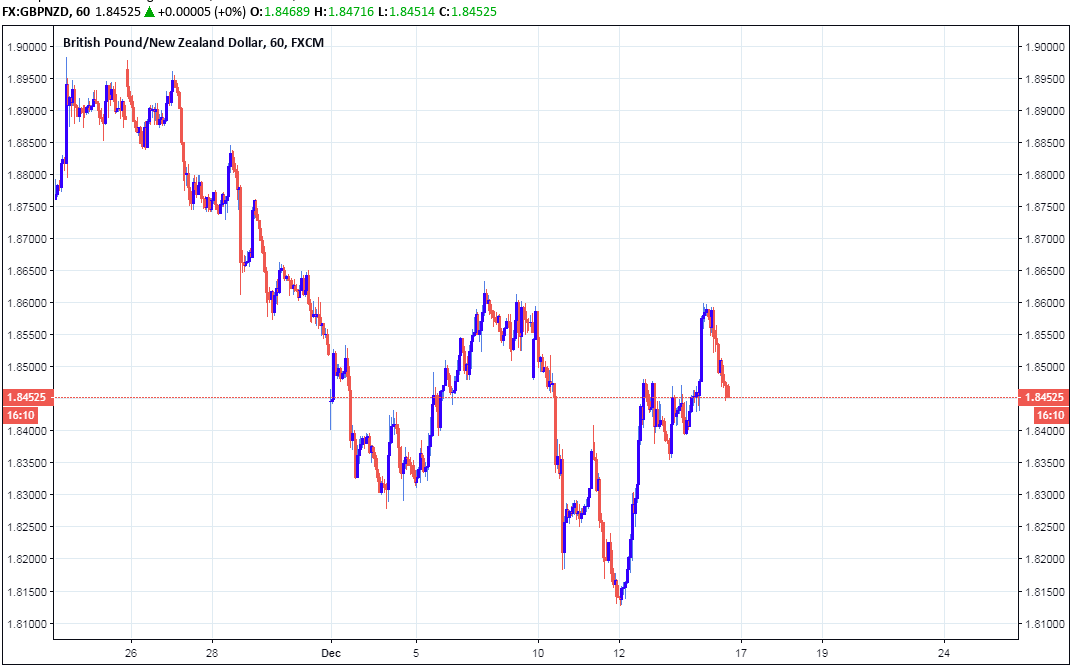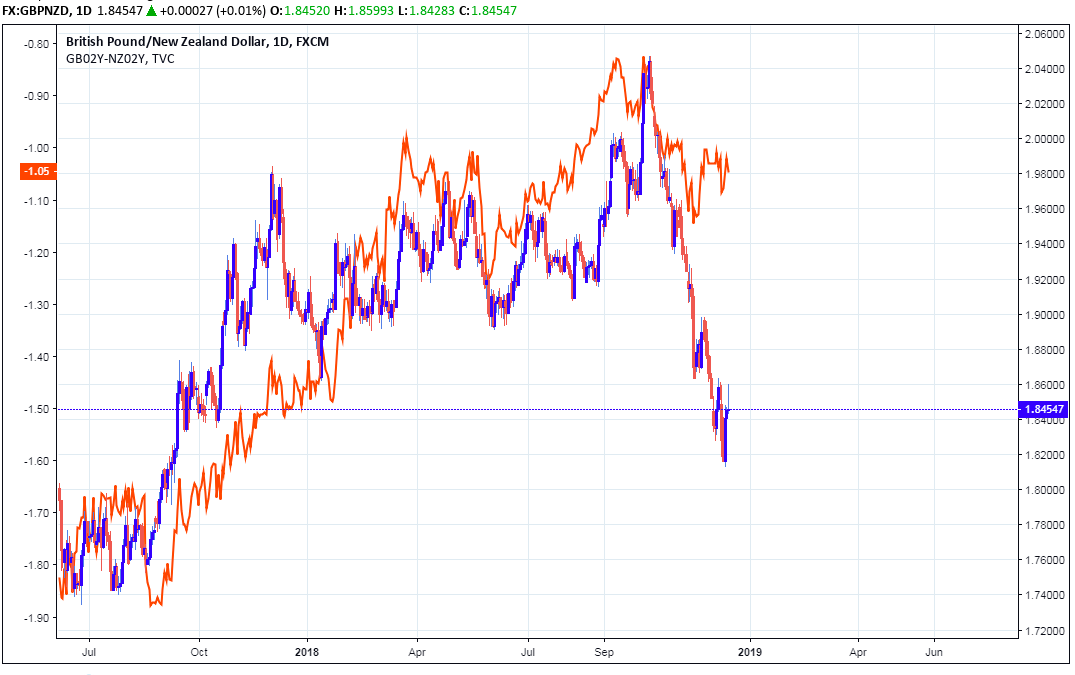The New Zealand Dollar Recovers From China-induced Lows as Trump Talks Trade Deals
- Written by: James Skinner
-

© Naru Edom, Adobe Stock
- NZD bounces off December lows after Trump talks China trade deal.
- But further progress, solid GDP next week, needed to sustain move.
- RBNZ may cut rates if no good show from economy Wednesday.
The New Zealand Dollar recovered from a December low Friday as risk-assets stabilised ahead of the weekend and President Donald Trump suggested a deal to end the so-called trade war between the U.S. and China could be near.
Asia's final trading session of the week left the Kiwi wounded after official data revealed a steep slowdown in the Chinese industrial sector during November, which was seen as a negative omen for New Zealand given its close links with the world's second largest economy.
Industrial production growth fell to an annualised pace of 5.4% in November, from 5.9% previously, when markets had looked for it to hold at 5.9%.
But it wasn't just industrial firms that saw fortunes turn for the worse in China during November as consumers also battened down the hatches.
Retail sales growth declined even further, coming in at just 8.1% for November, which marks a record low for spending growth among Chinese consumers.

Above: NZD/USD rate shown at hourly intervals.
Chinese data left the Kiwi nursing even more losses going into the weekend, although the NZD/USD rate had been retreating from four-month highs through much of December. Friday's price action in the Pound-to-Kiwi rate was similar.

Above: Pound-to-Kiwi rate at hourly intervals.
Advertisement
Bank-beating exchange rates. Get up to 5% more foreign exchange by using a specialist provider to get closer to the real market rate and avoid the gaping spreads charged by your bank when providing currency. Learn more here
President Trump claimed responsibility for the Chinese slowdown Friday but also said the country's efforts to secure a trade deal with the U.S. have ramped up in recent weeks and that an agreement could be struck soon.
The fall in industrial and consumer activity seen across China corresponds closely with the announcement and implementation of tariffs on Chinese goods exported to the U.S.
Industrial production growth has now declined from 7.2% in February, the month before White House tariffs on Chinese steel and aluminium were announced, to less than 5.5%. Fixed asset investment has slowed from 7.9% and retail sales growth has fallen from an annualised pace of 9.7% in February.
Both falls have gathered pace since July when the $250 billion of tariffs began to actually be implemented. It's exactly those figures that led markets to conclude this year that China's economy is heading for a rough patch.
China just announced that their economy is growing much slower than anticipated because of our Trade War with them. They have just suspended U.S. Tariff Hikes. U.S. is doing very well. China wants to make a big and very comprehensive deal. It could happen, and rather soon!
— Donald J. Trump (@realDonaldTrump) December 14, 2018
New Zealand's Dollar has been badly damaged in 2018, initially because of a deterioration in the interest rate outlook, but latterly due fears over the impact the trade war might eventually have on the Kiwi economy.
The trade war further hurt market hopes for the Reserve Bank of New Zealand RBNZ cash rate because of the impact it had on expectations for growth, an and because it also drove the U.S. Dollar higher.
Domestic politicians were saying Kiwi economic growth would slow a long time before the trade war actually got going, so the tariff fight merely added to negative market sentiment toward New Zealand.
Continued signs the trade war is coming to an end and third-quarter GDP data due for release next Wednesday will be crucial to the trajectory of the Kiwi currency going forward.
The Reserve Bank warned in July that it will cut interest rates further if growth does not pick up during the second half of the year, which means markets will scutinise next week's third-quarter GDP number closely.
Analysts say they need to see quarterly growth of 0.7% in order for a rate cut to be avoided. The outcome will be most important for the NZD/USD pair and other exchange rates not involving the Pound.

Above: NZD/USD (red & blue) at daily intervals with NZ-U.S. 2-year yield spread (orange).
In most instances exchange rates tend to follow the differential between short-term bond yields of the two relevant currencies so it is developments that drive the respective yields higher that dicate where the exchange rate goes next.
The NZD/USD rate recovered from earlier lows through November as U.S. yields fell and Kiwi yields rose, leading the differential between the two to rise in favour of the New Zealand Dollar, albeit from low and still-negative levels.
That price action came as markets began to speculate the Federal Reserve (Fed) could soon pause its interest rate hiking cycle, and as Kiwi yields rose in anticipation of an agreement to deescalate the trade war being struck between the U.S. and China at the G20 summit held at the end of that month.
A decent GDP number and some more optimism about a possible end to the trade war would be enough to drive the NZD/USD rate higher, as well as the Pound-to-Kiwi rate.
However, Sterling's relationship with the yield differential has recently broken down due to political instability in the UK and rising market fears over the probability of a so-called no deal Brexit occuring during the coming months. That has led to a 'political risk premium' being priced into the exchange rate.

Above: GBP/NZD (red & blue) at daily intervals with GB-NZ 2-year yield spread (orange).
Advertisement
Bank-beating exchange rates. Get up to 5% more foreign exchange by using a specialist provider to get closer to the real market rate and avoid the gaping spreads charged by your bank when providing currency. Learn more here










